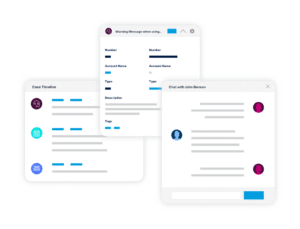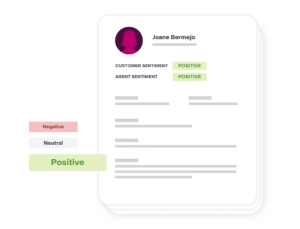How to Create Outstanding Customer Experiences in the 2020s
The 2020s are shaping to be the decade of revolutionary technology with the continuing evolution of smart technology in the customer experience sphere. We’ve seen how Artificial Intelligence (AI), Virtual Reality (VR), and now the Metaverse enhance customer experiences and take them on journeys they have never been on before.
Those embracing new customer experience technologies are excelling in customer retention rates. Similarly, companies that fail to establish high-definition customer experiences are encountering increasing levels of customer churn. Our research has found that almost three-quarters (71%) of sales and marketing leaders suspect customers are leaving due to poor customer service or experience, and 73% admitted they need to implement customer feedback to improve customer service and experience. Higher customer expectations are pushing businesses to constantly improve and strengthen their relationships and delve into new customer service skills and approaches, using Artificial Intelligence and harnessing data to improve the customer journey.
To achieve high levels of customer satisfaction, professionals must leverage the most important skills and technologies to align with evolving customer experience technology and trends.
So, what are the best ways to make customer experience soar in the 2020s?
Embrace Self-Service alongside Live Agents
Customers want to be supported at every touchpoint along their journey with a brand. With more than eight in 10 sales and marketing leaders (81%) believing their customers leave because of a lack of communication and personalized, relevant messaging, this will continue throughout the 2020s and beyond. The uptake of self-service will continue to be popular among customers for the 24/7 ease of interacting with a brand on their schedule.

They desire a quick, easy, self-serve interaction that makes the best use of their time rather than being presented with a default answer that is irrelevant to their query.
However, this doesn’t undermine the use of live agents. On the contrary, customers still want to be truly understood by a human when there is a problem, or they want to know how a product or service will best meet their needs. To answer a customer’s query, frontline support agents must be armed with the right technology, resources, and shared knowledge to diagnose and solve problems quickly.
Harness Data to Drive Sales and Interactions
Today, data plays a huge role in fuelling the customer experience. And yet, a primary struggle for many organizations is having an incomplete view of customer activity. Half of sales leaders admit that they cannot access customer data across marketing, sales, and service systems, leaving customer-facing team members without a clear picture to make strategic and tactical decisions. Once the data is collected, organizations can use AI to interpret it to help predict customer retention rate or ‘churn’ and trigger proactive actions to retain profitable customers.
Embrace Artificial Intelligence (AI)
AI has shaped customer experiences over the past five years and will continue to do so and become more accessible as it advances and organizations integrate it properly. AI can help drive more profitable outcomes such as intelligent lead scoring, predictive forecasting, personalized recommendations, and next-best actions, as well as predicting and preventing churn. AI-powered automation is changing CX teams’ workloads with machines doing more repetitive, labor-intensive tasks, allowing teams to work on more complex, higher-value, and revenue-generating tasks.
Foster Emotional Intelligence
Designing an emotionally aware organization is increasingly rising to the top of the boardroom agenda.
AI is replacing conventional feedback surveys and the manual task of sorting through large data sets to understand customer sentiment. AI uses sentiment analysis capabilities to amplify CRM system functions such as sales, marketing, and service interactions, along with an insight into each customer’s emotional state and intent. This is done by leveraging a combination of Natural Language Processing (NLP) and AI to surface next-level or next-best action for empathic customer engagement. Frontline agents can then understand how to respond using customer behaviors and emotions.
Ensuring that empathy is at the forefront of marketing strategy leads to an increase in new customer generation and increased trust amongst existing customers.

Align Teams to Create Coherence and Increase Functionality
Perhaps the biggest concern when there are continuous technological advances is the misuse of such technology and misalignment on how to use it coherently. This is no different when aligning IT, marketing, sales, and CRM teams across the customer experience landscape. To do so involves creating an environment with open communication so that employees can be transparent about what is and isn’t working for them. Once this is established, all teams can work towards creating a customer-centric mindset, choosing the right technology and management tools to help all teams unify KPIs and expectations.
Businesses must also understand the benefits of using a shared CRM data system to connect stakeholders with the data collected from sales, marketing, and CRM teams. Such benefits include saving time on administrative tasks with the CRM system compiling a complete real-time customer view and providing actionable insights for teams to use to act decisively at every critical touchpoint.
Closing Thoughts
Companies that continuously improve customer experiences are more likely to succeed and retain customers. This needs to be underpinned by flawless support at every customer touchpoint. To do this, companies need to ensure that the right technology—specific to the individual company—is integrated so that teams are always aligned to hit KPIs and deliver excellent customer support fit for the 2020s.
This blog post is based on an article initially published on Intelligent CIO.



